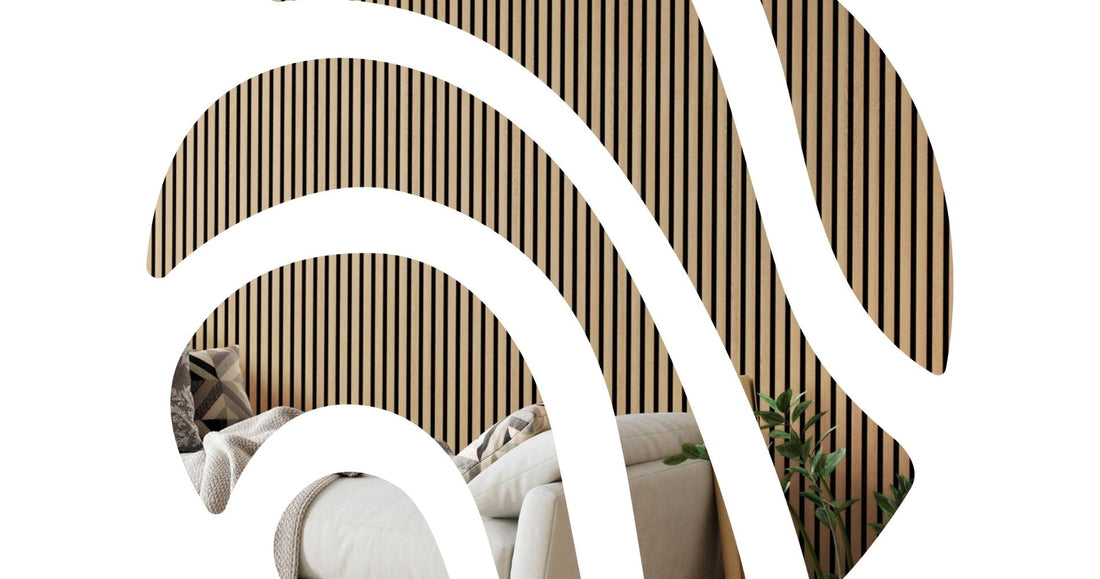In general, all building materials have a sound classification.
ABSORPTION CLASSES:
There are five absorption classes:
A: 0.90 / 0.95 / 1 > (Acoupnel with mineral wool)
B: 0.80 / 0.85
C: 0.60 / 0.65 / 0.70 / 0.75
D: 0.30 / 0.35 / 0.40 / 0.45 / 0.50 / 0.55 > (Acoupanneau without mineral wool)
E: 0.15 / 0.20 / 0.25
Unclassified: 0.15 / 0.20 / 0.25
The sound class of the panels varies depending on how you mount them.
This is because there are two ways to install acoustic panels and the way you mount the panels affects the sound rating.
Our Acoupanneaux are most effective on frequencies between 300 Hz and 2000 Hz
Mounting the panels directly on the wall without mineral wool allows the panels to obtain acoustic class D.
Mounting the panels on battens with mineral wool behind the panels allows the panels to obtain acoustic class A.
First of all, you must install 45 mm wooden slats, which you place on the surface of the wall with a spacing between each slat of 600 mm.
Next, you insert mineral wool between the slats, then finally, you mount the panels on the slats so as to cover the mineral wool.
Why choose to install the panels directly on the wall if you don't get a class A result?
Well, that's because the acoustic wall - if you follow our installation guide - will take up 6.7cm of space from the wall and in the room, which can be a problem in some cases.
This is why installing the panels directly on the wall (without mineral wool) is the ideal solution for some.
The Acoupanneau nevertheless obtains a grade: D
On a scale from A to F, sound class D is average class. And it's actually quite good when it comes to dampening sound.

The main difference between the configuration with mineral wool and the configuration without mineral wool is that the Class D configuration is not as effective with respect to low frequency tones as the Sound Class A configuration.

This specifically means that the Class D configuration will not be as effective in terms of absorbing bass and deep male vocals.
However – when it comes to high frequency pitches – women's voices, children's voices, breaking glass, etc. – both configurations are more or less equally effective.
And the advantage of course being that the Class D configuration will only take up 2.2cm of space from the wall and in the room instead of the 6.7cm that the Class A configuration will take up.
Discover Acoupanneau our batten panels



